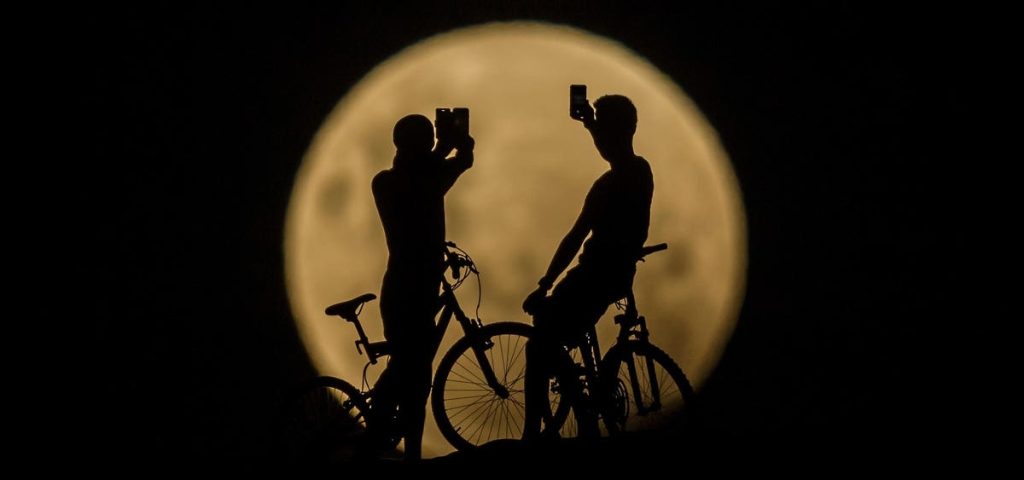On Wednesday, August 30, 2023, the second full moon of the month will rise.
A “Blue Moon.”
It’s something that occurs every few years because our natural satellite in space takes 29 days (one “moon-th) to orbit the Earth.
However, there’s something else super-special about this particular “Blue Moon.”
It’s also the biggest, brightest “supermoon” of 2023.
The moon orbits Earth in a slight ellipse so its distance varies. Its closest point to Earth is called perigee and its farthest point is called apogee. A supermoon is a full moon that occurs at or close to the monthly day of perigee (technically, a supermoon is a full moon that occurs within 90% of the moon’s closest approach to Earth in a given orbit).
Whether or not anyone notices that the “Blue Moon” (which, sadly, won’t actually look blue) will be larger than usual is unlikely. Supermoons are about 14% larger and 30% brighter than the moon at apogee. It’s that extra brightness that’s more noticeable.
Best Time To See The ‘Super Blue Moon’
A full moon is best viewed when it rises soon after sunset during dusk. The Super Blue Moon will officially be 100% illuminated at 8:37 p.m. EDT on Wednesday, August 30, 2023, with the best time to view it that evening at moonrise where you are because it rises during twilight. Europe gets a bonus viewing night on Thursday, August 31 when the moon rises only slightly later than on Wednesday.
Wednesday, August 30, 2023
- In London sunset is at 7:54 p.m. BST and moonrise is at 8:08 p.m. BST.
- In New York sunset is at 7:33 p.m. EDT and moonrise is at 7:45 p.m. EDT (the moment of full Moon is at 8:37 p.m. EDT).
- In Los Angeles sunset is at 7:23 p.m. PDT and moonrise is at 7:36 p.m. PDT (the moment of full Moon is at 5:37 p.m. PDT).
Thursday, August 31, 2023
- In London sunset is at 7:52 p.m. BST and moonrise is at 8:24 p.m. BST (the moment of full Moon is at 1:37 a.m. BST).
Wishing you clear skies and wide eyes.
Read the full article here










